How is e-Waste recycled?
Hardware and e-Waste often contain many different component parts, including batteries, cabling, circuit boards, transistors, heat sinks, and processors. These parts are in turn, made of different materials; such as plastics, aluminium, copper, zinc, nickel and other precious metals such as lithium, indium and tantalum.
We’ve outlined the recycling process for each type of material below … and provided a download.
Hard Disks, Tapes and other data storage
Regardless of whether a device is going to be re-used or recycled; it’s important to check whether it contains any type of data storage. For example, computer hardware is likely to contain hard disk drives, tapes, sim cards, USB sticks, flash memory cards, CD’s and DVD’s.
Galaxy Engineers carefully check every item of electrical waste; and depending on the Customer’s preference and the market value, will either erase and re-use the device, or shred and recycle it. Both data destruction processes can be undertaken for the customer at their premises.
Heat sinks, CPU's and other component parts
Again – wherever possible - Galaxy will try to re-use component parts. There is a good market for refurbished IT hardware. But assuming the components are old, faulty, or has no use; then they will be recycled. We have to bear in mind that older technologies are not usually as energy efficient – so at some point a decision has to be made to recycle old hardware.
Hardware and electrical waste will contain a variety of component parts such as circuit boards, central processing units, heat sinks, RAM memory, graphics or network cards, transistors and so on.
These component parts will consist of a variety of different metals, and precious metals, such as:
• Aluminium • Copper • Nickel • Titanium, gold and silver
The process is again, one of mechanical separation (shredding) and grading using magnets, eddy currents and optical sorters; then metal recycling as detailed previously.
Circuit Boards
The most common method used to recycle PCB’s (printed circuit board) is hydro-metallurgy.
PCB’s consist of:
- A fibre glass expoyresin layer
- A copper layer
- A tin-lead or nickel layer
- Plastic coatings
- Soldered components, such as transistors, capacitors, plugs, switches and LEDs
- Precious metals such as gold, platinum, silver, palladium and platinum
First, the circuit boards are resized and cut into more manageable pieces for processing. This also makes it easier to remove or loosen some of the small components.
Then the boards go into a leaching process whereby they are dissolved using water and a solvent, such as acid. The two most common methods used are solvent extraction or ion exchange. Ion exchange can recover 99.99% of rare earth elements.
The metals can be extracted and sent for refining. The water solution is sent for further processing, or safe disposal. Recycling PCB’s is a complex and delicate process; and attention needs to be paid to both worker and environmental safety, to prevent injury or water/land contamination.
Sadly, a great deal of e-Waste is being shipped to developing countries where recycling processes are neither safe nor efficient. The rate of recovery of precious metals using basic techniques (such as burning) is just 50%; and workers are at risk of respiratory disorders, burns and other injuries. Read more | Bloomberg - e-Waste recycling in Ghana
Batteries
Electrical waste and computer hardware contain all sorts of batteries, including:
- Lithium ion
- Alkaline batteries (AA, AAA, C, D)
- Nickel Cadmium
- Nickel Metal Hydride
It is crucial that batteries do not end up in landfill, as the elements would eventually leach into land and water ways; and are toxic to wildlife. It is also important that batteries are put in general waste, which goes for incineration, as they can easily become damaged when passing through shredders, short out, catch alight and cause fires.
And – like electrical components and circuit boards - batteries contain precious elements such as lithium. We only have a finite supply of these elements, and with the increasing global demand for electric vehicles and electronics, it’s crucial that these elements are recovered and recycled.
That said, lithium battery recycling, for example, only recovers between 25 – 75% of composite materials, depending on the process used.
The battery recycling process involves:
- Deactivation or discharge of the battery
- Disassembly
- Crushing, sorting and filtering
- Electrolyte recovery
- Hydrometallurgical processes involving the use of acid baths to extract different elements
- Pyrometallurgical processes involving thermal treatments to extract different elements at different temperatures
Battery recycling is currently resource intensive, relatively inefficient compared to other recycling processes, and expensive. For that reason, many lithium batteries are not being recycled.
However, because the elements used in batteries are in short supply and in high demand – and because of the danger they present to both the environment and waste processes if they are separated and processed carefully – it is absolutely essential that batteries are recycled. More effective and efficient recycling processes are in development.
Read more | Chemical and Engineering News - Battery Recycling
LCD and CRT Monitors
An LCD (liquid crystal display) monitor is made of different materials, which are separated and then the different materials processed as outlined above. These materials include:
- Plastics
- Circuit board
- Cabling
Depending on the age of the screen, however, other hazardous materials may have been used in the display. LCD’s that were manufactured before 2009 are likely to contain a cold cathode fluorescent lamp (CCFL) which contains mercury, as well as POPs. (See the plastic recycling page for more info on POPs).
CRT (cathode ray tube) monitors may contain mercury, lead, and phosphorus. These elements can’t be disposed of in landfill as they would leach into the ground and water ways; but they also should not be incinerated.
CRT monitors, and older mercury containing LCD monitors, are classed as Specially Controlled Waste in Guernsey – and are exported to hazardous waste treatment facilities off-island.
Other hardware and electrical appliances
Other electrical devices such as printers, domestic appliances, docking stations, keyboards, mice, headphones, cameras, games and toys, lights and remote controls etc. may contain batteries; so these are always disassembled into their component parts, including:
- Plastic or metal cases and parts
- Circuit boards or microchips
- Transistors, capacitors switches etc.
- Batteries
- Cabling
- And in the case of printers: consumables, such as toner
These different materials can then be recycled via the generic routes for plastics, metals, circuit boards, batteries and so on —mentioned previously.
Cables
When we can – Galaxy will try to re-use cables in good or new condition. But assuming the cable is old, faulty, or is so old that it is no longer used; then it will be recycled.
Cabling consists of a plastic sheath/case containing an interior plastic core, and metal wires (e.g. copper). So cabling is recycled by cutting the plugs off each end and passing the lengths through a granulator. The granulator shreds the cable very finely, resulting in the total separation of plastics and copper.
Both products can then be recycled and manufactured into new products as per the plastics and metal processes described next.
Metals
Again, the exact process for each type of metal will differ. E-Waste contains a range of different metals including aluminium, nickel and copper.
Different types of metals will be separated from each other via shredding, with separation achieved using magnets and eddy currents.
Different types of metals will be smelted at different temperatures and reformed into new products.
Plastics
There are a lot of different types of plastics; and the difficulty that Recyclers face is when two or more different plastics are fused together. For example – a drinks bottles may be made of PET, but the cap and seal might be made of HDPE, and the label printed on a plastic film (LDPE). In this example, the 3 different plastics will be separated via shredding. The shredded materials can then be separated using air blowers, optical sorting (sorting using lasers, based on colour differences) or floating, to try and get a high quality, homogenous material (>99% PET). Any plastic that cannot be separated, or is too contaminated, will be rejected and go for incineration.
The process for each type of plastic will differ, but in general the material will be cleaned and then “pelletized.” The pellets can then be melted and extruded into new products, e.g. a new drinks bottle. Older plastics (typically pre-2009) are likely to contain Persistent Organic Pollutants (POPs). POPs are no longer accepted for recycling; so these plastics must be incinerated in order to permanently remove them from manufacturing. Most electrical waste and computer hardware tends to have a date, or a CE mark on or near the battery to confirm it was manufactured post—2009.
A note on black plastics ...
There are different political, economic, safety and technical reasons why some “soft” black plastics cannot be, or are not, recycled. Rigid black plastics are usually recycled. By soft plastic, we refer to single use food trays and similar black plastics.
From a technical perspective, it is difficult to separate out the soft black plastics during the recycling process because they do not reflect light so cannot be easily identified by optical scanners, or separated according to density. Without using automated means to separate the black plastics, they would have to be sorted by hand; which is just not economical on a large scale. Another issue is that single use plastics, such as plastic film on food trays, cause problems during mechanical processing. Many households do not take the film off the tray, and it difficult to separate the film from the tray mechanically.
In addition to the technical difficulty, new black plastic is so cheap there would be little market within manufacturing industries for recycled black plastic anyway. The cost of setting up the specific infrastructure needed to be able to specifically sort black plastics is a deterrent, as these costs would not be recovered from re-sale.
Read more | National Geographic - Plastics and Recycling
Toner and Inks
Toners are usually shredded, to separate the different component parts and outer casings, including plastics, metals such as aluminium, microchips, and any residual toner.
The different plastics, metals and microchips can then be recycled in different ways, as mentioned above.
Most major printing brands offer a “take back” scheme for used cartridges. The cartridges are “recharged,” or the unit recycled, rather than incinerated.
If you do not have a contract with a print company which offers a take back scheme, then you might want to look into independent companies who purchase used toners. However, be aware that the shipping cost usually outweighs any value.
Galaxy tries to re-use or recycle toners where possible; but if the cartridges are badly contaminated, or they have no market value, they will be used as fuel within energy to recovery plants—generating electricity or heating.
Paper
Paper is first sorted into different types and grades. It is washed with a special detergent to remove all the inks, glues and staples and is then mixed with water to create a “slurry.” By adding different materials to each batch of slurry, different types of paper can be created including magazines, newspaper, or office paper which has a heavier “gsm” (grams per square metre).
The paper slurry is spread out into very large sheets using rollers, and after it has dried it is rolled and cut up into sheets.
This process is not undertaken in Guernsey: paper is exported to specialist paper mills who have the required machinery and space to mulch, wash, form and dry out the paper. The paper mills then sell the end product on to printers and manufacturers.


